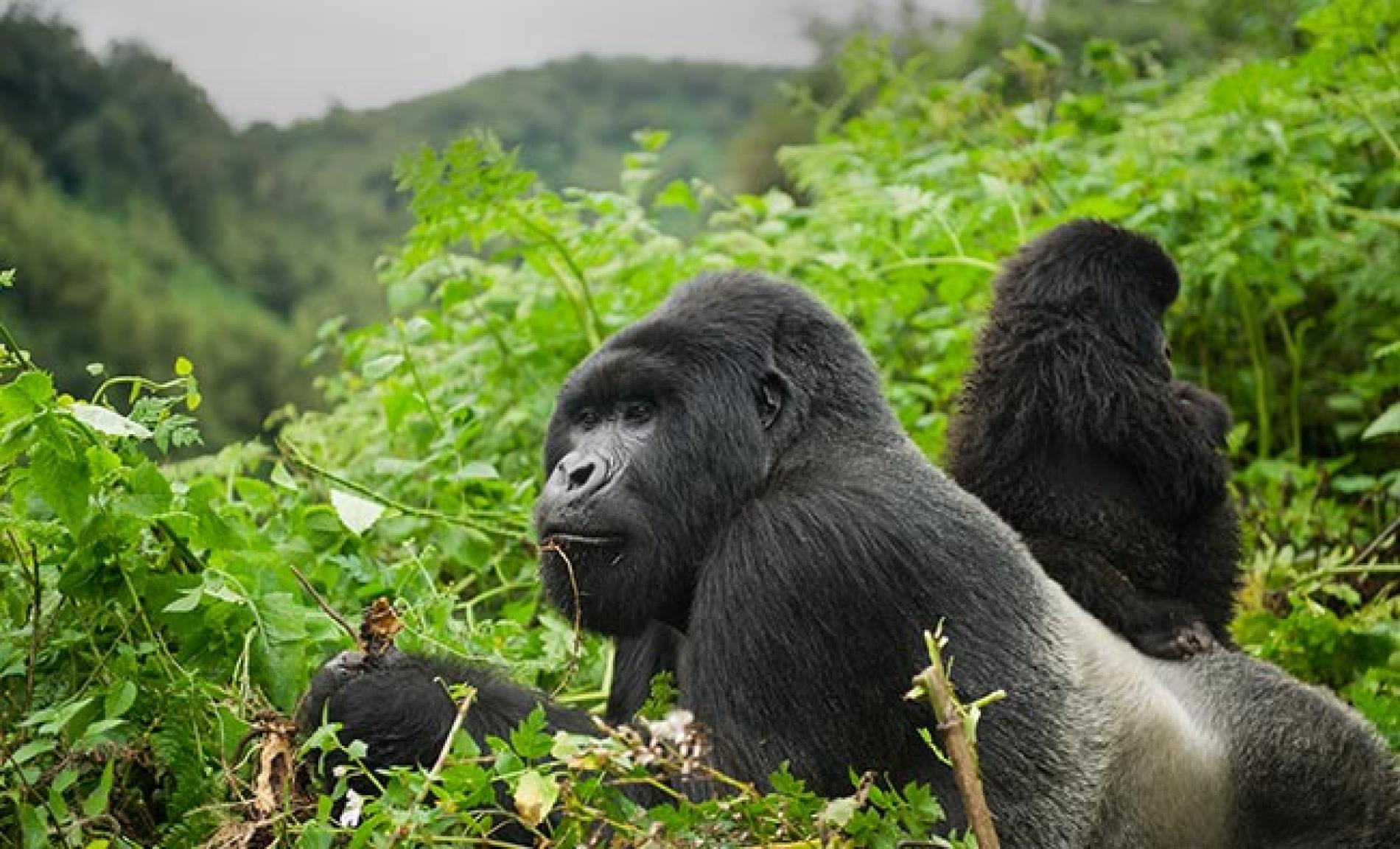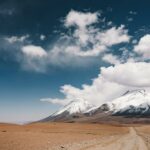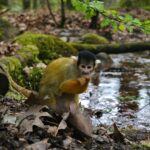You know how no two human fingerprints are alike? Well, mountain gorillas—those gentle giants of the cloud forests—have a remarkably similar feature: unique nose prints. This incredible adaptation isn’t just a cool quirk of nature; it’s become a cornerstone of mountain gorilla conservation.
Beyond Fingerprints: A Natural Identity System
Nestled high in the mountains of Rwanda, Uganda, and the Democratic Republic of Congo, mountain gorillas have captivated the world with their intelligence and social complexity. But studying these elusive creatures in their dense rainforest habitat presents a unique challenge: how do you tell them apart? The answer, it turns out, lies in the intricate patterns etched onto their noses.
Just like our fingerprints, each mountain gorilla possesses a one-of-a-kind nose print—a complex tapestry of ridges and furrows that remains constant throughout their lifetime. This natural identification system, first recognized for its scientific value by renowned primatologist Dian Fossey, has revolutionized the way we study and protect these endangered primates.
Dian Fossey’s Legacy: Pioneering Nose Print Identification
In the heart of Rwanda’s Virunga Mountains, Dian Fossey dedicated her life to understanding and protecting mountain gorillas. Her groundbreaking research, which began in the 1960s, highlighted the importance of recognizing the individuality of each gorilla—a concept that laid the foundation for modern conservation efforts.
Fossey meticulously observed and documented the unique nose print patterns of the gorillas she studied, painstakingly sketching each detail to create a catalog of individual identities. This revolutionary approach allowed her to track individuals over time, uncover their social structures, and understand the complex dynamics within gorilla families.
From Sketches to Databases: How Nose Prints Inform Conservation
Today, researchers continue to build upon Fossey’s legacy, using nose prints as a cornerstone of mountain gorilla conservation. High-resolution photographs have replaced hand-drawn sketches, and sophisticated databases now store thousands of nose print records, allowing for rapid identification and comparison.
Here’s how nose prints aid conservation efforts:
- Individual Tracking: By recognizing individual gorillas, researchers can monitor their movements, health, and social interactions over time. This information is crucial for understanding gorilla behavior, identifying potential threats, and assessing the effectiveness of conservation strategies.
- Population Monitoring: Nose print identification allows scientists to accurately estimate population size and track changes over time. This data is essential for assessing the impact of habitat loss, poaching, and disease, and for developing targeted conservation interventions.
- Anti-Poaching Efforts: In the unfortunate event of poaching, nose prints can be used to identify victims and gather critical evidence to support law enforcement efforts.
A Window into Gorilla Society
Beyond their practical applications in conservation, gorilla nose prints offer a fascinating glimpse into the social lives of these enigmatic creatures. While researchers primarily use nose prints for identification, some scientists theorize that gorillas themselves may use these unique features for individual recognition. Imagine being able to sniff someone out and instantly know who they are—a handy skill for navigating the complex social hierarchies of gorilla society!
Furthermore, the intricate folds and ridges of a gorilla’s nose may also enhance their sense of smell, a crucial sense for foraging, detecting predators, and potentially even recognizing familiar individuals by scent.
The Future of Nose Print Identification: Technology and Beyond
As technology advances, so too do the tools available to conservationists. Researchers are exploring the use of facial recognition software, adapted for gorilla features, to automate the process of nose print identification. This could significantly expedite data analysis, allowing researchers to process vast amounts of information more efficiently and make more informed conservation decisions.
While technology plays an increasingly important role, the heart of nose print identification lies in the dedication and passion of individuals who work tirelessly to protect mountain gorillas. These researchers, park rangers, and conservationists put themselves on the front lines, often facing challenging conditions and personal risks, to ensure the survival of these magnificent creatures.
Unique Insights and Untapped Potential: Delving Deeper
The world of gorilla nose prints is ripe for further exploration. Here are some intriguing avenues for continued research:
- The Evolution of Nose Prints: Why have mountain gorillas, in particular, developed such clear and defined nose prints? What evolutionary pressures might have driven this adaptation?
- The Role of Olfaction: How significant is a gorilla’s sense of smell, and does their unique nose structure play a role in enhancing this sense?
- Gorilla Cognition and Visual Recognition: To what extent do gorillas rely on visual cues like nose prints for individual recognition? What other senses and cognitive processes might be involved?
By delving into these areas, we can gain a deeper understanding of the remarkable adaptations and complex social lives of mountain gorillas, strengthening our ability to protect them for generations to come.
- Unlocking Francis Alexander Shields’ Finance Empire: A Comprehensive Biography - July 12, 2025
- Unveiling Francis Alexander Shields: A Business Legacy - July 12, 2025
- Francis Alexander Shields’ Business Career: A Comprehensive Overview - July 12, 2025
















1 thought on “The Remarkable Secret of a Mountain Gorilla’s Unique Nose”
Comments are closed.